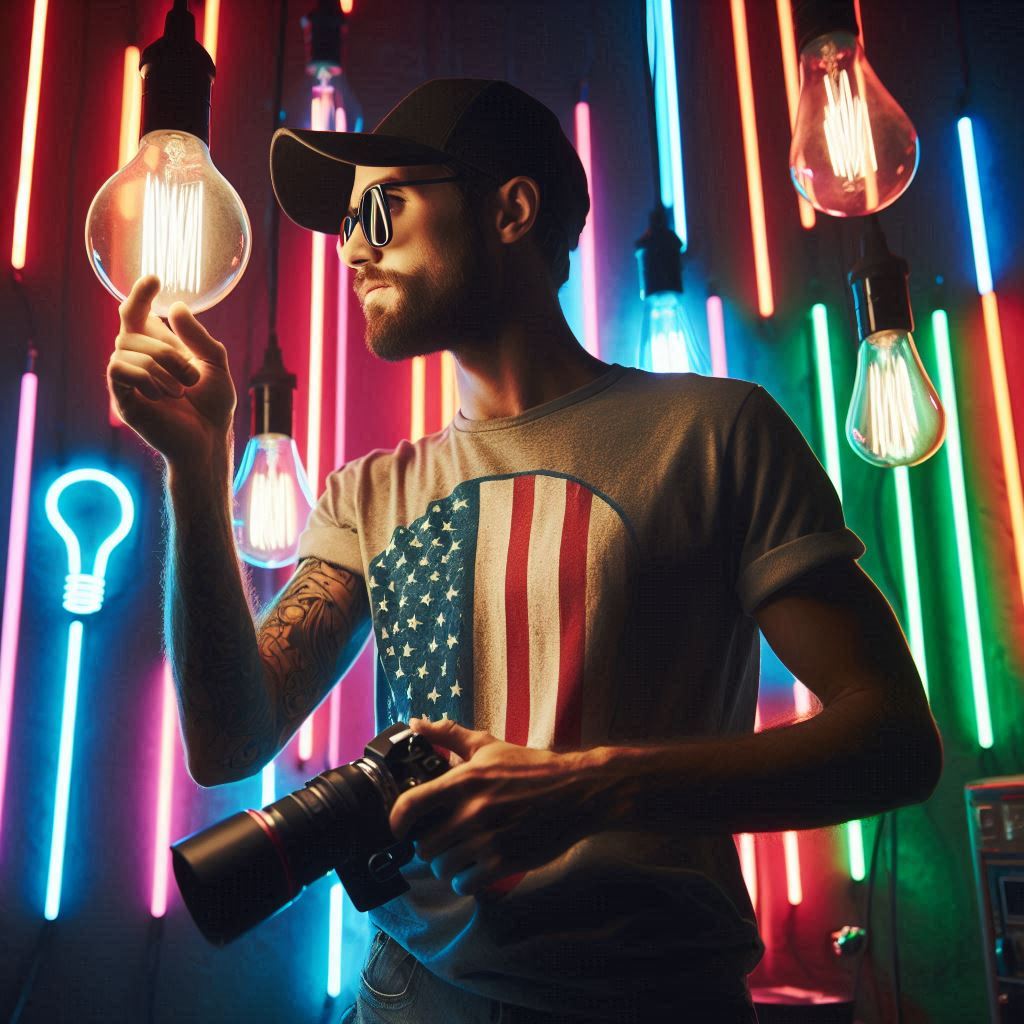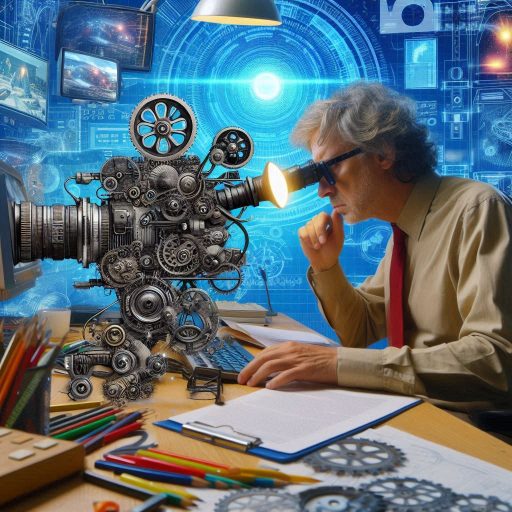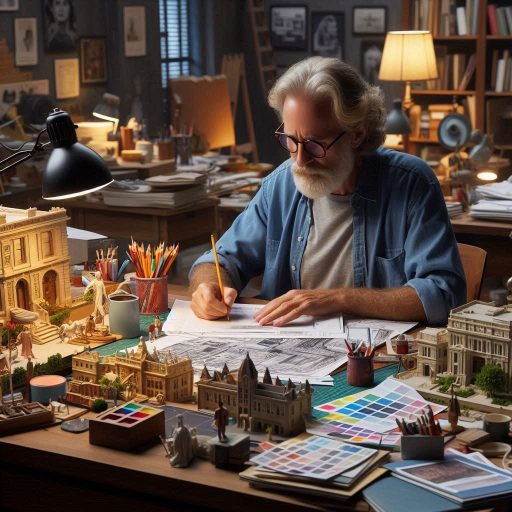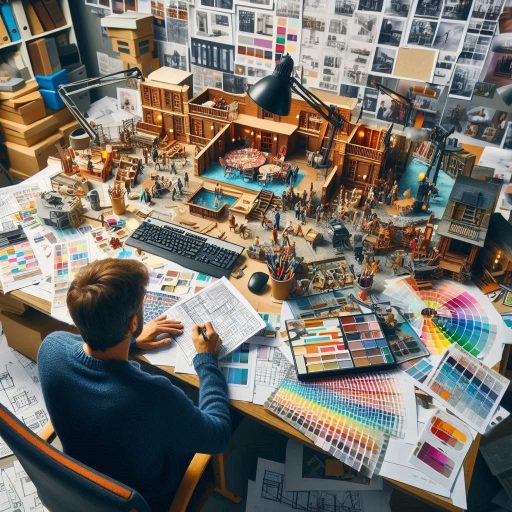Introduction
A production designer is responsible for the overall visual look of a film, television show, or theater production.
They design and create the sets, environments, and visual themes that bring stories to life on screen.
Collaborating with directors, producers, and other departments, production designers ensure that every visual element aligns with the narrative’s vision.
In film and television, the production designer plays a crucial role in shaping the audience’s experience.
They establish the mood, tone, and time period of the story through their design choices.
Without them, a production‘s visual coherence would be lost, leaving the story flat and disconnected.
The job is highly creative, requiring both artistic vision and technical knowledge.
A production designer must be able to sketch concepts, visualize spaces, and manage construction teams.
They need a deep understanding of architecture, color theory, and set dressing to create authentic and engaging environments.
Strong communication and problem-solving skills are also essential, as they must adapt to the director’s vision and the project’s budget.
The role of a production designer is a blend of artistry and practicality, turning imaginative concepts into tangible, immersive worlds that enhance storytelling.
Daily Responsibilities
Collaborate with Directors, Producers, and Other Crew Members to Establish the Visual Style of a Project
As a production designer, your day starts with collaboration.
You work closely with directors, producers, and key crew members to establish the visual style of the project.
The director shares their vision, and you translate it into a cohesive design plan.
This involves understanding the narrative, themes, and emotional tone of the story.
You contribute creative ideas and provide insights on how to shape the visual world.
These discussions set the foundation for the overall look and feel of the project.
You participate in production meetings to align with everyone involved.
By maintaining open communication, you ensure that your designs support the director‘s storytelling and the producer’s practical constraints, such as budget and timeline.
This collaborative approach helps you balance creativity with the project’s logistical demands, creating a unified vision.
Create Sketches, Storyboards, and Mood Boards to Visualize Ideas
Once you‘ve aligned with the director‘s vision, you begin visualizing ideas.
You create sketches, storyboards, and mood boards to communicate your concepts.
These tools are essential for giving the team a clear picture of your ideas before production starts.
Sketches allow you to quickly explore different design options.
Storyboards help plan out key scenes and show how visual elements will interact within the space.
Mood boards, filled with reference images and color schemes, set the tone for the overall aesthetic.
This stage requires creativity and precision.
You experiment with various design elements, from color palettes to textures, to achieve the desired mood.
By presenting these visuals to the director and crew, you gather feedback and refine your designs.
This process ensures that everyone is on the same page before moving forward with production.
Oversee the Design of Sets, Props, and Costumes
After your designs are approved, you shift your focus to overseeing the creation of sets, props, and costumes.
You work closely with various departments to ensure each piece aligns with the established visual style.
Whether it’s designing a futuristic cityscape or a cozy living room, you pay attention to every detail.
You ensure that sets reflect the time period, location, and tone of the project.
Props and costumes are also crucial to creating an immersive world.
You collaborate with costume designers and prop masters to ensure these elements match the overall aesthetic.
Every object, from a character’s outfit to a key prop, must support the narrative.
By overseeing these aspects, you help bring the director‘s vision to life.
Coordinate with Art Directors, Set Decorators, and Construction Teams to Bring Designs to Life
The next step in your day involves coordinating with art directors, set decorators, and construction teams.
You oversee the building and decorating of sets, ensuring that your designs are executed properly.
Art directors help manage the creative process, while set decorators add the finishing touches that make the spaces feel lived-in and authentic.
Construction teams bring your ideas from paper to physical form.
Regular site visits are crucial.
You inspect the sets as they‘re built, making adjustments as needed.
You also troubleshoot any issues that arise during the construction process.
By staying involved every step of the way, you ensure that the final product aligns with the original vision.
In fact, a production designer‘s day is filled with collaboration, creativity, and coordination.
From brainstorming ideas with directors to overseeing set construction, every task contributes to creating the visual world of a project.
Through detailed planning and constant communication with various departments, production designers play a vital role in shaping the look and feel of a film, TV show, or theatrical production.
Read: Best Tools and Software for Character Designers
Challenges Faced
Balancing Creative Vision with Budget Constraints
A production designer‘s role involves striking a delicate balance between creativity and budget.
Each project begins with a vision that excites everyone involved.
However, financial constraints often challenge that vision.
To navigate this, I prioritize key elements that enhance the overall aesthetic.
I focus on what will have the greatest impact while minimizing costs.
Research plays a crucial role in this process.
I explore materials and resources that fit the budget without sacrificing quality.
Collaborating with other departments, like art and props, can uncover creative solutions.
Together, we brainstorm ways to achieve the desired look without exceeding the budget.
Sometimes, this means finding affordable alternatives or repurposing existing assets.
Communication is vital when addressing budget constraints.
I keep an open dialogue with producers and directors about financial limits.
This ensures everyone shares a unified vision while remaining mindful of costs.
By being transparent, I build trust and maintain a collaborative spirit.
Ultimately, balancing creativity with budget constraints enhances my skills as a production designer.
Meeting Strict Deadlines and Managing Multiple Projects Simultaneously
Time management is essential for a production designer.
Each project has strict deadlines that require precise planning and execution.
I often juggle several projects at once, which can be challenging.
To stay organized, I create detailed schedules that outline key milestones.
This helps me visualize progress and stay on track.
Prioritization is key when managing multiple projects.
I assess each project‘s demands and allocate resources accordingly.
This means focusing on urgent tasks while keeping an eye on upcoming deadlines.
I also utilize digital tools to streamline communication and collaboration.
These tools help track progress and ensure everyone remains on the same page.
Effective teamwork is crucial in this fast-paced environment.
I rely on my team‘s expertise to execute ideas efficiently.
Delegating tasks allows me to concentrate on high-level decisions while trusting my crew to handle details.
Regular check-ins with my team keep the momentum going.
Meeting deadlines requires a proactive approach and a willingness to adapt.
Handling Last-Minute Script Changes and Re-Designing Sets on the Fly
The film and television industry is known for its unpredictability.
Last-minute script changes can disrupt even the most well-laid plans.
As a production designer, I must adapt quickly to these shifts.
This requires a flexible mindset and the ability to think creatively under pressure.
When script changes occur, I review the new requirements immediately.
I assess how these changes impact the existing set design.
If needed, I sketch quick ideas for alternative layouts that meet the new vision.
I maintain constant communication with the director and other departments to align our efforts.
Collaboration ensures we all work towards a common goal despite changes.
Re-designing sets on the fly requires resourcefulness.
I draw on my network of suppliers and artisans to source materials quickly.
I often find innovative ways to modify existing elements to fit the new vision.
This agility allows us to maintain quality while responding to time constraints.
Ultimately, handling last-minute changes tests my problem-solving skills.
It challenges me to think outside the box and adapt to new ideas.
This flexibility makes every day unique and keeps my role as a production designer exciting.
Embracing these challenges leads to creative breakthroughs and exceptional final products.
Read: Ceramic Art: From Hobby to Professional Career

Discover More: Portfolio Tips for Aspiring Production Designers
Learn More: The Importance of User Research in Industrial Design
Case Study: Working on a Film Set
Walking Through a Typical Day on Set for a Production Designer
A production designer’s day on set begins early, ensuring every detail is in place before filming.
They review the set with the art department, checking that props and decorations match the director’s vision.
Adjustments are made to accommodate last-minute script changes or technical needs from the cinematographer.
Every scene requires meticulous attention, from the color palette to the arrangement of furniture.
As the actors prepare, the production designer oversees lighting adjustments to maintain consistency.
They consult with the director and cinematographer throughout the day, ensuring all visual elements align with the film‘s tone.
The Process of Scouting Locations and Transforming Them Into Film Sets
Scouting locations is a crucial part of the production designer‘s role.
They visit potential sites, assessing their suitability for the film’s story.
Once a location is chosen, they envision how to transform it into a functional set.
They sketch designs and plan modifications, such as painting walls or rearranging spaces.
The designer often brings in a crew to construct or renovate areas that don‘t align with the film’s aesthetic.
Details like the era, atmosphere, and tone of the story guide every decision.
The goal is to enhance storytelling while making the space camera-ready.
The Collaboration with the Director and Cinematographer to Achieve the Desired Look
Collaboration with the director and cinematographer is key to a production designer‘s work.
Early in pre-production, they meet to discuss the overall vision for the film.
The designer listens carefully to understand the emotional tone and visual style the director wants to create.
They also work closely with the cinematographer, ensuring that the lighting and camera angles complement the set design.
Both the designer and cinematographer discuss color schemes, textures, and materials that will enhance the story visually.
The synergy between these roles creates a cohesive look that supports the film‘s narrative.
The Satisfaction of Seeing the Final Product on the Big Screen
After months of designing, planning, and building, seeing the final product on the big screen is deeply rewarding.
The production designer takes pride in how their work enhances the film‘s overall aesthetic.
Watching the audience respond to the setting and how it enriches the story brings immense satisfaction.
The designer reflects on the countless hours spent perfecting every visual element.
From scouting locations to the final touches on set, the process culminates in a cinematic experience that impacts viewers emotionally.
For the production designer, seeing their vision fully realized is the ultimate reward.
Read: How to Create Memorable Characters: Pro Tips
Career Path and Education
The Various Paths to Becoming a Production Designer
There are multiple paths to becoming a production designer.
Some start by studying design or art in college.
Art schools offer formal training in color theory, drafting, and visual storytelling.
Others begin with a broader major, such as architecture or interior design, and later specialize.
However, a degree isn’t always necessary.
Many successful production designers learn through hands-on experience in the industry.
Internships on film sets or in theater productions provide invaluable exposure.
For some, working their way up from smaller roles, such as set design assistant or props coordinator, is key.
Each step offers a chance to learn different aspects of production design.
On-the-job training is another common route.
Working alongside experienced production designers allows beginners to see the role in action.
Many start as production assistants, doing basic tasks, before gradually taking on more creative responsibilities.
Through these experiences, they acquire practical skills and an understanding of how to manage a team.
Additionally, some learn by working in related fields, like graphic design or event planning.
These roles also involve visual storytelling and problem-solving, which are essential to production design.
Regardless of the path chosen, persistence and a willingness to learn are vital.
Importance of Networking and Building a Portfolio
Networking plays a crucial role in the career of a production designer.
The industry often operates through personal connections.
Building relationships with directors, producers, and other creatives opens doors to new opportunities.
Attending industry events, film festivals, and even informal gatherings helps aspiring designers meet the right people.
Volunteering on low-budget projects or collaborating with friends is another way to build contacts.
Production designers often receive job offers based on recommendations from those they’ve worked with before.
A strong portfolio is also essential.
It serves as a visual r‘sum‘, showcasing a designer’s best work.
A portfolio should include a range of projects, demonstrating versatility across different styles and genres.
Including sketches, mood boards, and completed set photos provides a comprehensive view of the designer’s process.
Aspiring production designers should constantly update their portfolios with new work.
Even student or personal projects can add valuable pieces.
A well-curated portfolio can be the deciding factor when a production company chooses between candidates.
The Skills and Qualities Needed to Succeed
Creativity is at the heart of production design.
Designers must create unique and engaging worlds that support the director’s vision.
They need to interpret scripts and imagine the visual tone of each scene.
Attention to detail is equally important.
Every item in a set, from the furniture to the lighting, affects the final product.
A small inconsistency can distract viewers from the story.
Problem-solving skills are crucial as well.
Designers face tight budgets, time constraints, and unexpected issues on set.
They need to think quickly and make adjustments without sacrificing quality.
Communication and collaboration skills are also key.
Production designers work with a range of departments, from costumes to lighting, to create a cohesive visual look.
They must be able to listen to feedback and integrate others’ ideas while maintaining their creative direction.
Lastly, a successful production designer needs strong organizational skills.
Managing multiple projects, deadlines, and team members requires careful planning and prioritization.
Transform Your Career Today
Unlock a personalized career strategy that drives real results. Get tailored advice and a roadmap designed just for you.
Start NowRead: Ceramic Art Exhibitions to Visit in 2024
Conclusion
A production designer’s role is pivotal in shaping the visual world of a film or TV show.
They work closely with the director to transform abstract ideas into tangible sets, props, and environments.
This collaboration begins with thorough script analysis, where the designer identifies essential visual themes and elements.
One key responsibility is managing the art department.
From set construction to prop sourcing, every detail falls under their supervision.
Coordinating with costume designers, lighting teams, and visual effects artists ensures a cohesive look throughout the production.
The challenges are immense.
Balancing creativity with budget constraints often forces production designers to make tough decisions.
Time pressure can also be intense, with tight deadlines requiring rapid problem-solving and adaptability.
Production designers play a critical role in translating a director‘s vision into reality.
Their work brings characters and stories to life, enhancing the emotional depth of every scene.
Without them, a project‘s visual narrative would fall flat.
For those aspiring to become production designers, the journey is both challenging and rewarding.
Continuous learning, experimenting with new techniques, and collaborating with diverse teams will ensure growth.
Embrace the art of storytelling through design, and you‘ll be contributing to unforgettable cinematic experiences.
[E-Books for Sale]
The Big Book of 500 High-Paying Jobs in America: Unlock Your Earning Potential
$19.99 • 500 High-Paying Jobs • 330 pages
Explore 500 high-paying jobs in America and learn how to boost your career, earn more, and achieve success!
See All 500 High-Paying Jobs of this E-Book
1001 Professions Without a Degree: High-Paying American Jobs You Can Start Now
$19.99 • 1001 Professions Without a Degree • 174 pages
Discover 1001 high-paying jobs without a degree! Unlock career tips, skills, and success strategies for just $19.99!




